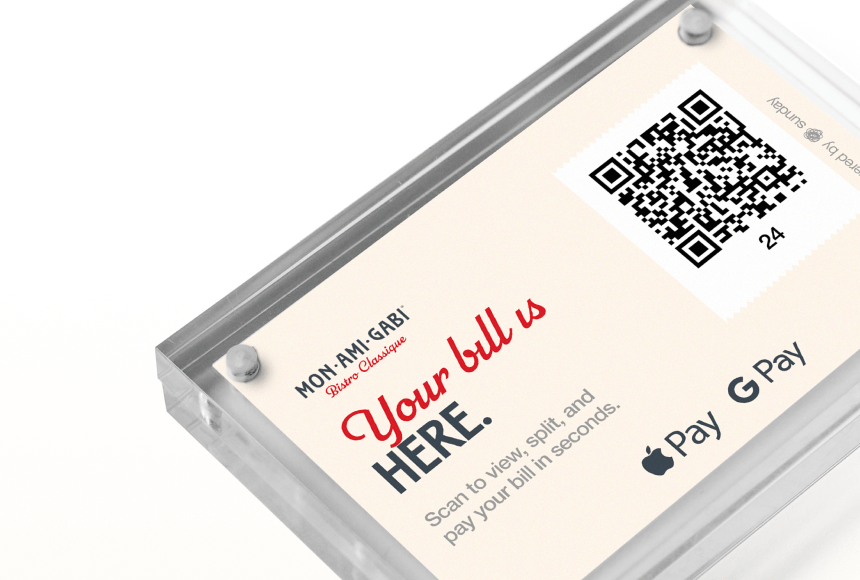
Safeguard Your Restaurant’s Future: Mastering POS and Wi-Fi Technology for Stable Sales
The Rising Importance of Reliable POS Terminals
Have you ever seen a busy restaurant grind to a halt because the credit card machines suddenly refused to cooperate? In an industry that depends on lightning-fast turnaround—and where every second can mean an extra tip or a lost sale—technology must be your friend, not your foe. Today, reliable POS terminals (Point of Sale terminals) are at the heart of an efficient restaurant operation. They deliver the speed and convenience you and your guests crave, but only if connectivity holds up.
According to a recent report by the National Restaurant Association, restaurants that incorporate modern POS systems and ensure stable internet connectivity can increase their average sales by up to 20%. That’s no small number, especially in a competitive market. By 2025, however, we expect even more advanced POS solutions, pushing convenience and efficiency to new heights, provided you know how to avoid pitfalls related to connectivity.
As the world grows more connected, the ways we serve our customers also evolve. If your POS terminals freeze mid-transaction or your Wi-Fi blinks out just as someone is trying to pay, you risk more than a little inconvenience. The result could be frustrated guests, lost revenue, compromised data security, and even negative reviews. Fortunately, there are practical strategies to ensure your restaurant’s POS and Wi-Fi technology work harder—and fail less often—for you.
Why Your Restaurant Wi-Fi Must Be Rock-Solid
Most restaurant owners know they need decent internet to handle orders and credit card payments. But it goes beyond that. A dependable Wi-Fi connection can:
- Boost Your Service Speed: Servers can quickly send orders to the kitchen and finalize checks at the table.
- Provide Added Guest Perks: Customers often expect free Wi-Fi. It’s a small detail, but it can keep them happy if they’re waiting or working on the go.
- Support Innovative Payment Solutions: Apps like sunday allow guests to pay via QR code in seconds, leave a tip, and share a Google review. This efficient process relies on stable connectivity to function without hiccups.
- Enable Real-Time Updates: Cloud-based POS systems require internet access to update pricing, menu items, and promotions across multiple terminals.
In 2025 and beyond, the possibilities will keep expanding. From interactive displays to personalized marketing based on loyalty apps, Wi-Fi supports a whole ecosystem of technology that can differentiate your restaurant from the competition. When your internet connection falters, so does the guest experience.
The Steep Costs of Connectivity Failure
Imagine a packed Thursday evening: multiple tables finishing up their meals around the same time. The credit card reader goes offline for five minutes. Some guests pay in cash, but most wait—and become increasingly impatient. Meanwhile, new guests are arriving, waiting for tables to clear. Your staff scrambles to fix the issue, but the queue of irritated diners grows by the second.
This nerve-racking scenario leads to more than short-term chaos. Repeated connectivity problems can result in:
- Lost Sales: Each minute of downtime can directly translate into fewer completed transactions and a higher chance of guests walking out.
- Negative Reviews: Whether on Google, Yelp, or social media, frustrated guests are more likely to vent about poor service experiences.
- Decreased Employee Morale: Frequent tech breakdowns raise stress levels for your staff, impacting service quality and job satisfaction.
- Damage to Reputation: Word spreads quickly about a restaurant that can’t handle the basics like payment processing.
With the restaurant industry’s slim operating margins, even a small dip in service efficiency can dent your bottom line. By 2025, the pace of service will only keep accelerating, and the tolerance for technical hiccups will drop to zero. This is why investing in a robust connectivity strategy today is a forward-thinking move.
Essential Strategies to Avoid Lost Sales
Before you assume that all you need is a new router and an extra phone hotspot, consider that a strategic approach is far more effective. Let’s break down the essentials.
1. Use Dual Internet Connections
One of the most reliable ways to guarantee continuous uptime is to use a dual internet connection—one primary, one backup. Should one go down, the other takes over seamlessly. This level of redundancy can be invaluable on those high-volume weekends you live for. Yes, a second internet plan is an added expense, but some business internet providers offer affordable backup packages. With two data sources, your POS and guest Wi-Fi can stay online even if your main connection falters.
2. Invest in Quality Networking Hardware
Routers and access points designed for home use often fall short as soon as you encounter the demands of a commercial setting. Instead, opt for business-grade networking equipment built to handle the constant strain of multiple devices, streaming, and credit card transactions. These devices usually come with:
- Better Cooling and Longevity
- Extended Wi-Fi Range
- Quality-of-Service (QoS) Features to Prioritize Payment Traffic
- More Robust Security Features to Protect Payment Data
Spending a bit more on reliable equipment can save you from headaches that cost time and money. Think of it like sourcing high-quality ingredients for your menu. The upfront cost is higher, but the lasting benefits are indisputable.
3. Segment Your Wi-Fi Network
Granted, everyone loves free customer Wi-Fi. But you never want any single error or malicious attack on the guest network to interfere with your POS terminals. Splitting (or segmenting) your network into separate channels—one for POS and back-office staff, another for guests—is a security best practice. This arrangement helps ensure that if your diners love streaming their favorite shows or uploading selfies, it won’t clog the bandwidth for your payment processing.
4. Regularly Update Your POS Software
Software updates aren’t just about fancy new features. They often include vital security patches and performance improvements. Make it a habit to check for updates at quiet times—perhaps after closing or before opening—so any necessary downtime doesn’t affect guests. Staying up to date will prevent compatibility issues that might cause connectivity drops or slow performance.
5. Train Your Staff to Troubleshoot
While you can’t expect every server to be an IT wizard, basic troubleshooting steps can be taught and memorized. Inform them about what to do if the POS terminal freezes or the Wi-Fi connection drops. This might include:
- Restarting the POS app
- Running a quick speed test
- Checking for loose ethernet cables
- Verifying if the access point lights are lit
A well-trained team can prevent small glitches from escalating into major crises. That way, everyone remains calm instead of calling you in a panic the moment something goes wrong.
The Tale of Sarah’s Corner Bistro
To illustrate how these strategies can play out in real life, imagine a small but bustling eatery called Sarah’s Corner Bistro. Sarah opened her bistro with a limited budget. She figured any old router and a mid-range POS system would be enough. For a while, she got by.
However, as her lunch rush grew and more customers started paying by phone or credit card, issues piled up:
- Guest Wi-Fi slowed to a crawl whenever the bistro was crowded.
- POS terminals sporadically disconnected, delaying checkouts.
- Her staff spent too long on the phone with tech support during peak hours.
Eventually, Sarah accepted that “just enough” connectivity was no longer acceptable. She took a holistic approach:
- She invested in a dual internet connection—a fiber plan as primary and a more affordable cable line as backup.
- She upgraded to commercial-grade networking hardware with better security protocols.
- She created separate networks for POS devices, guests, and office tasks.
- She worked with her POS provider to keep software updated and run performance checks monthly.
- She gave her team a crash course in quick troubleshooting basics.
Within weeks, her staff noticed a smoother flow. Guests got their checks promptly, and her lines at the register cleared faster. The best part? She saw a noticeable jump in overall satisfaction and even in Google reviews, where customers praised the swift, easy payment process.
What to Look for in 2025: Emerging Tech Trends
As we approach 2025, technology will continue to advance at a brisk pace. Basic Wi-Fi and standard POS terminals will be entry-level expectations rather than competitive advantages. Here are some emerging trends you should keep on your radar:
Advanced Contactless Payment Options
While contactless payment has grown significantly in the last few years, the tide is far from over. Expect more streamlined solutions like facial recognition payments, integrated loyalty systems that automatically apply rewards, or even wearable devices that link directly to your POS. These features will require secure, real-time data exchange, so robust internet capabilities will continue to be crucial.
Edge Computing
Instead of sending all the data to a distant server for processing, edge computing brings analytics closer to the source. In simple terms, your network could handle tasks like busy table forecasting or inventory updates locally. This reduces latency and lowers the load on your internet connection. Restaurants with advanced POS tools might adopt mini-servers on-premises to keep operations running smoothly, even if external connectivity is spotty.
Self-Service Kiosks and Digital Menu Boards
Quick-service restaurants have already popularized self-service kiosks. By 2025, expect more full-service establishments to experiment with digital ordering stations. Not only do they free up your staff, but they open new opportunities for upselling via vibrant digital menus. Again, connectivity is the backbone that powers real-time menu updates and payment processing at each kiosk.
AI-Powered Analytics
Artificial Intelligence is creeping into every industry, and restaurants are no exception. Tools will be available to automate tasks like forecasting peak hours, managing inventory, and even personalizing menu suggestions based on customer history. Such algorithms thrive on large data sets—which must be transmitted securely and efficiently in real time. If your Wi-Fi can’t handle the data flux, you’ll miss out on the competitive edge AI can provide.
Securing Your Data Amid Enhanced Connectivity
As your restaurant’s technology ecosystem expands, data security becomes even more important. The last thing you want on top of connectivity issues is a security breach that puts credit card details at risk. By following a few best practices, you can safeguard your restaurant’s sensitive information while providing a modern experience:
- Encrypt Your Networks: Require a secure password for staff networks and use WPA3 encryption if possible.
- Implement a VPN if Needed: For remote management of your POS system or for secure data backups, using a Virtual Private Network can add an extra layer of protection.
- Regular Security Audits: Schedule assessments to identify vulnerabilities before attackers do.
- Compliance with Industry Standards: Stay up to date with PCI DSS (Payment Card Industry Data Security Standard) requirements. These guidelines exist to protect cardholder data.
Strong data security measures go hand in hand with robust connectivity. Both contribute to a trustworthy brand image and encourage customers to keep coming back, confident their data is safe with you.
Integrating Payment Solutions Like sunday
Modern diners expect to settle their bill swiftly. This is where services like sunday can dramatically speed up the process—guests simply scan a QR code to pay, leave a tip, and even post a Google review without waiting for the server to bring a terminal to the table. This efficiency requires stable internet to facilitate immediate payment authorization and data exchange.
Here’s how sunday and similar digital payment tools can help:
- Contactless Transactions: Reduce physical handling of cards or cash.
- Secure Integration: Comply with industry regulations for smooth, encrypted payments.
- Instant Reviews and Tips: Encourage guests to tip generously and share their positive experiences right away.
That said, no digital payment tool in the world can overcome a shaky network. The synergy of stable Wi-Fi and a user-friendly payment app is key to delivering a frictionless guest experience.
Leveraging Redundancy: More Than Just Internet Backups
Redundancy isn’t limited to having a secondary internet plan. You can create fail-safes at multiple levels:
- Offline Mode on POS: Some systems can store transaction data locally if the internet dips, then sync once you’re back online.
- Battery Backup: A short power outage can ruin the dinner rush. Having backup power for your POS terminals and key networking gear means service continues even if the lights flicker.
- Reserve Devices: Keep an extra POS terminal or tablet around. If one malfunctions, you can quickly swap instead of scrambling in front of frustrated customers.
In the dynamic chaos of a restaurant environment, second chances are precious. This principle extends to your technology. Redundant systems might feel like optional extras—until the day you need them most.
Building a Team-Oriented Tech Culture
We’ve touched on the importance of training staff to troubleshoot. Yet, the broader goal is to build a tech-forward culture within your restaurant. From line cooks to front-of-house managers, everyone should understand the basics of your POS and Wi-Fi setup. Why? Because problems rarely strike at convenient times, and management can’t be everywhere at once.
Encourage an atmosphere where employees feel comfortable reporting small connectivity issues before they become disasters. In smaller operations, staff might keep silent about minor glitches if they feel they’re “bothering” the boss. Foster open communication, and you’ll catch issues early.
When to Seek Professional Help
You don’t have to handle every technical hurdle on your own. If you notice recurring problems, it might be time to call in IT experts specializing in hospitality environments. They can:
- Conduct a site survey to identify Wi-Fi dead zones.
- Optimize your network channel to reduce interference.
- Recommend hardware that fits the volume of traffic in your restaurant.
- Set up robust cybersecurity protocols for POS transactions.
For complex integrations—like hooking your POS up to inventory software or third-party delivery apps—experts can ensure you do it right, without creating new vulnerabilities. The best part? After the initial investment, you’ll often find that professional setup reduces those frantic, mid-service meltdown calls to the help desk.
Frequently Asked Questions (FAQ)
How do I know if I need a second internet connection for my restaurant?
If your restaurant experiences even occasional internet downtime, you risk disruptions in payment processing and guest satisfaction. In high-volume venues, a backup connection is strongly recommended to minimize potential outages.
Does upgrading to better networking hardware really make a difference?
Yes. Consumer-grade routers often struggle with the volume and speed demands of a busy restaurant. Business-grade hardware offers stronger performance, longer durability, and better security features—crucial benefits in a commercial setting.
Can I just rely on offline mode for my POS system if my internet fails?
Offline mode is a useful safety net, but it’s not a permanent solution. Transactions must eventually sync back online, and prolonged downtime can still create a backlog and potential errors. Having consistent connectivity is best.
Are digital payment apps like sunday secure?
Yes, if set up and maintained properly. Apps like sunday comply with payment card security standards and use encryption to safeguard data. A stable, protected Wi-Fi connection adds another layer of security.
What’s the most important step to keep my POS and Wi-Fi running smoothly?
Overall, a combination of robust hardware, secure network configuration, regular software updates, and staff training is key. Even one weak link in the chain can cause issues, so taking a holistic approach is your best bet.
Find out more today
Drop us your details below and we’ll reach out within the next 24h
The payment terminal to make your operation simpler.
Connected to your POS, we offer the only payment terminal specifically designed for restaurants.




